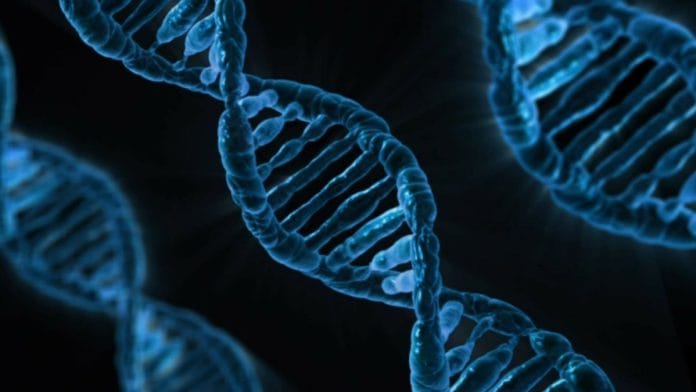New Delhi: Researchers at the Massachusetts Institute of Technology (MIT) have developed an amber-like polymer for long-term storage of DNA, offering a significant advantage over the existing methods that require freezing.
The findings published in the Journal of the American Chemical Society on 12 June showed that this new material, capable of storing DNA at room temperature, protects it from heat and water damage.
This research was inspired by the natural history of preservation of genetic materials in amber, which is a form of fossilised tree resin, where millenia of biological specimens have been found preserved across the world.
The researchers at MIT successfully stored DNA sequences, and an entire human genome, in their newly-created polymer that they call T-REX — Thermoset-REinforced Xeropreservation. It is a play on the film Jurassic Park, where scientists use DNA preserved in amber to bring dinosaurs back to life.
This technology could revolutionise digital information storage by encoding data in DNA, allowing high-density storage without the need for energy-intensive freezing. Read more here.
Sleep deprivation & weaker memory: The exact relationship
A study by researchers at the University of Wisconsin and the University of Michigan, published on 12 June in Nature, has outlined exactly how human memory is affected by the lack of sleep. While there was always conjecture about sleep and its effect on memory, the authors of the study uncovered exactly what happens inside the brain during this period, which aids or harms the formation of memories.
The formation of memories is deeply connected to the activation of neurons during waking hours — called sharp-wave ripples (SWRs) — which are then replayed during sleep in the same way, thus helping the hippocampus retain information. According to the study, when the body experiences a lack of sleep, these SWRs still fire during waking hours, but do not replay in the exact same way, or sometimes are unable to replay at all, thus making the brain unable to retain the memory.
The scientists compared SWRs activation and replay in mice that could sleep vs mice with sleep deprivation, and found an almost 50 percent difference in the levels. These findings are crucial for understanding the exact relationship between sleep and memory. Read more here.
Also Read: Milky Way’s last big collision with another galaxy was much more recent than previously thought
Hybrid work model does not impact productivity, improves employee retention
A randomised controlled trial (RCT) of over 1,600 employees in a hybrid work model showed that such work conditions increase job satisfaction and retention of employees. Published in Nature on 12 June, the study was conducted by scholars from USA’s Stanford University and China’s Peking University on employees of a Chinese technology company over six months, from August 2021 to January 2022.
The point of the study was to tackle the perception by employers that work-from-home, which had become a norm across the world after the COVID pandemic, led to reduced productivity or damaged career development.
The authors found that there was no change in the productivity of employees, who followed a hybrid work-from-home system. Instead, it reduced quit rates drastically for employees like women, the ones in non-managerial positions, and those that had longer commutes to the workplace.
The study also surveyed managers before and after the employee survey was conducted, and found an overall increase in how they rated their employees’ productivity after the survey. Read more here.
Earth’s rotation slowing down since 2010, new evidence proves
The inner core of the Earth is critical to its magnetic field because its rotation influences that of the Earth’s surface. There has been speculation and research on the slowing down of the core’s rotation speed, but now scientists from University of Southern California have demonstrated this information, using data from 147 earthquakes and seismic activity. This new research was published in Nature on 12 June.
For two decades, scientists have debated the inner core’s movement, with some suggesting that it rotates faster than the Earth’s surface. The authors of this new study found the evidence compelling, since it covered a longer time period — from 1991 to 2023 — and also matched data from previous studies about Earth’s rotation.
The inner core’s slower movement, observed for the first time in decades, suggests a shift driven by the liquid iron outer core and gravitational influences from the mantle. This does impact Earth’s surface, although minimally, potentially altering day length by milliseconds. Further research aims to uncover the precise reasons behind this shift. Read more here.
(Edited by Mannat Chugh)
Also Read: Study of 1.3-billion-year old Martian meteorites unlocks new secrets of planet’s topography






